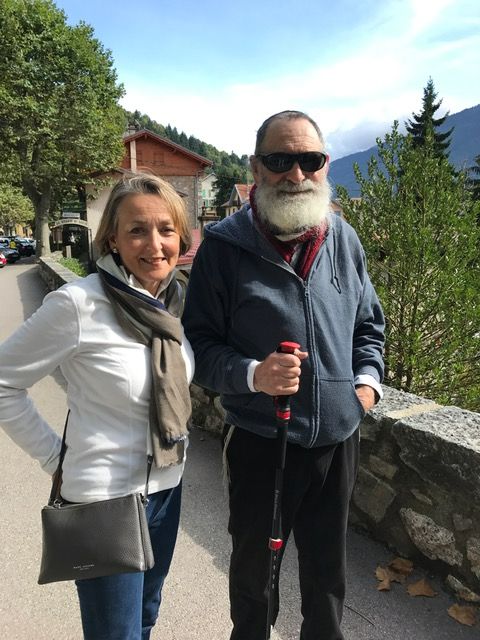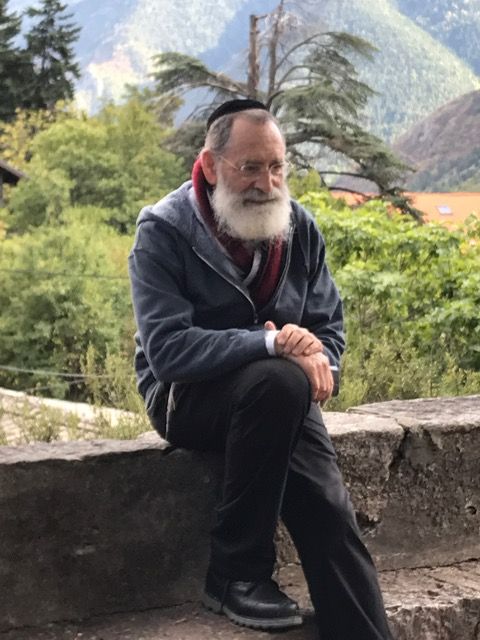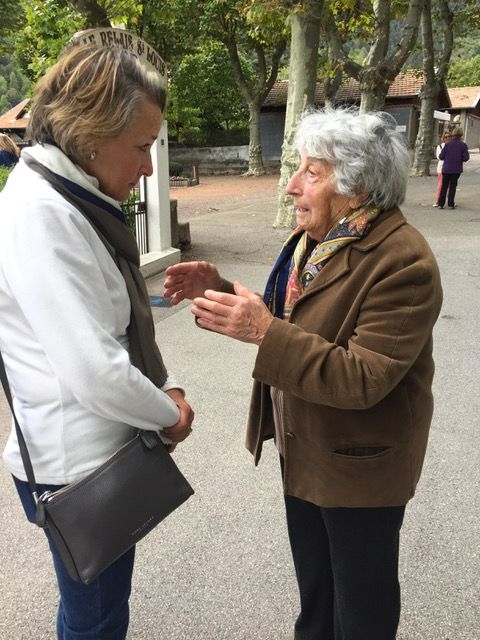In August 1943 a 15-year-old girl arrived in Saint Martin Vésubie to spend the summer holidays with a friend. Little did she know that a few weeks later she would have to escape across the Alps to save her life. Since the age of 10 she had been in constant fear for her life having fled Nazi Germany after Kristallnacht, spending 18 months in Belgium, then fleeing to Vichy France where she spent weeks hiding in cellars, was interned in Rivesaltes, and finally moving to relative safety in Nice, at that time occupied by the Italian army which was more compassionate to the Jews.
In the summer of 1943 her father sent her to spend a few weeks during the school holidays with some friends who were in assigned residence in Saint Martin Vésubie.
That young girl was my mother, Edith Hirth. She had always told me about her painful wartime experiences but also of the happy period during her brief stay in SMV.

I feel honoured that this commemoration has given me the opportunity to reflect on that period and to pay tribute today to all those good decent people of SMV — the villagers, the farmers, the policemen, who helped, protected and showed compassion to the 1000 Jews who had found refuge in their village. Many not only risked their own lives but the lives of their families in sheltering these Jews who were being hunted like animals. It took great courage to do what was right and just.
Today there are 65 million refugees around the world fleeing areas of conflict, threatened with torture, death, rape. May the compassion and decency of the people of SMV inspire us to play a part in helping many of today’s refugees either by supporting them financially or by persuading our governments to offer them a safe haven.
Every year at Passover the Jewish people are invited to remember how G-d took the Children of Israel out of slavery in Egypt. In fact we are commanded to re-tell the story to our children as if we were being brought out of Egypt ourselves. This is the basis of our custom to re-enact this Exodus.
Tomorrow those of us who will be walking to the Col de Fenestre will be re-enacting another “Exodus”. We will be remembering how almost 1000 people- young and old, mothers with babes in arms -left from this place in the early hours of the morning of 9th September to follow the retreating Italian soldiers, fleeing the German army which has occupied France’s southern Zone. Many, like my own mother were dressed in light summer clothes and wore sabots (wooden shoes)- little protection against the treacherous terrain and the cold.
My mother told me how they walked one behind the other on a narrow path stumbling over the rocky terrain in the dark; how she spent the first night in a Vacherie (barn for milking cows) and then the second night in the Italian soldiers’ caserne (barracks).
And then after walking for two days and two nights they finally reached Borgo San Dalmazzo only to find the Germans waiting for them! I cannot begin to imagine the disappointment and fear they must have felt at that moment. 350 people -mothers desperate for some food for their children, others too exhausted to continue – reported to the Germans. They were all deported to the camps…only 18 survived.
Fortunately the family my mother was with (the Hochners) realized the danger of staying with the larger group of Jewish refugees and made their way to the synagogue in Turin where they were advised to go south to Rome, as the Allied Forces were close by. My mother spent the next nine months hidden in a French convent in Rome until the liberation of Rome on 4 June 1944.
I certainly would not be standing here today if it wasn’t for the network of Catholic priests and nuns who helped so many Jews escape the clutches of the Nazi enemy.
Sadly like so many of the survivors my mother is no longer alive to give testimony. We have moved from living memory to historical memory. It is therefore incumbent on us, the second and third generations to continue to tell their stories so that future generations will understand and remember what happened and that the Shoah does not become a mere footnote in history.
In the words of Eli Wiesel: if we don’t remember them, we commit them to a second death”.
Linda Rosenblatt




Merci pour votre témoignage que je lis pour la première fois, et cela me fait penser à notre récent entretien téléphonique